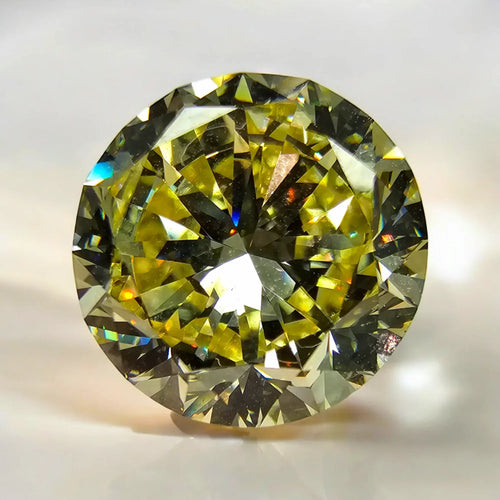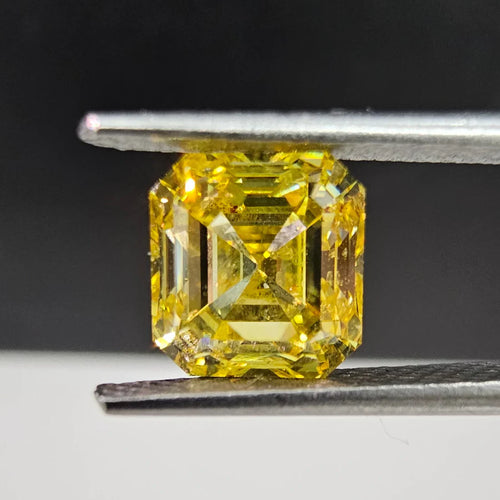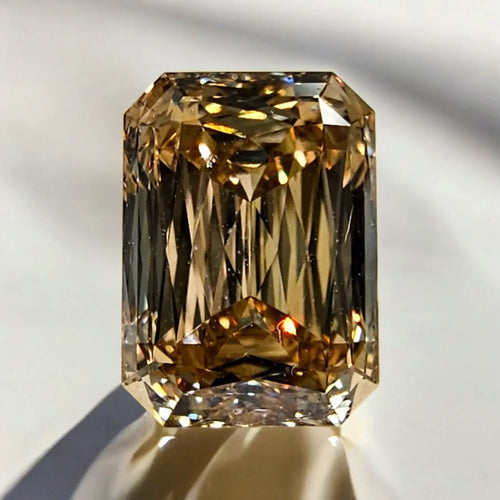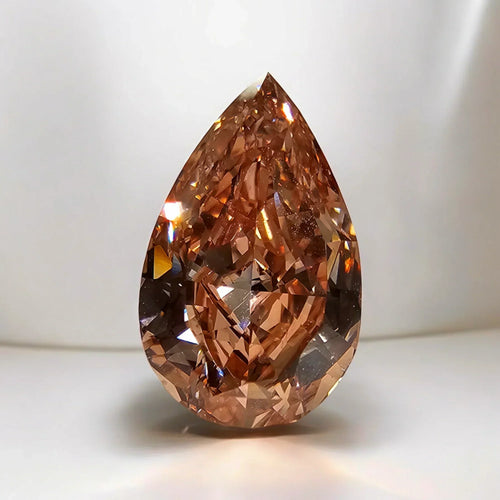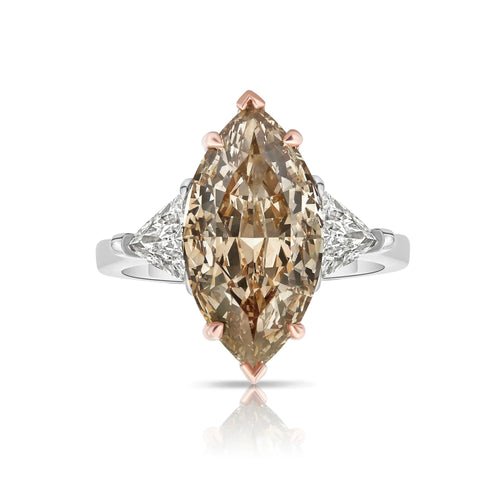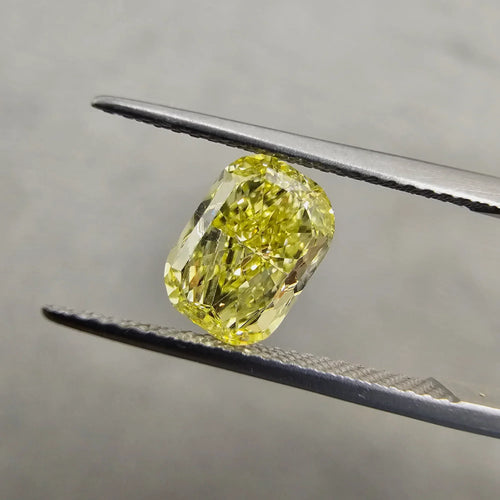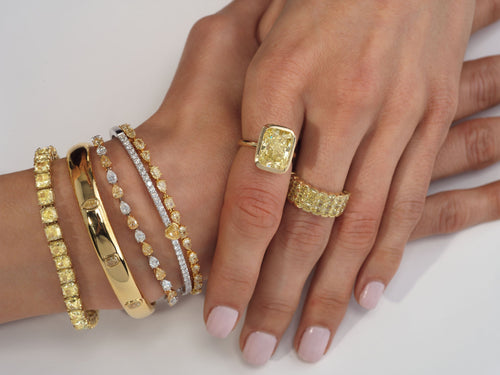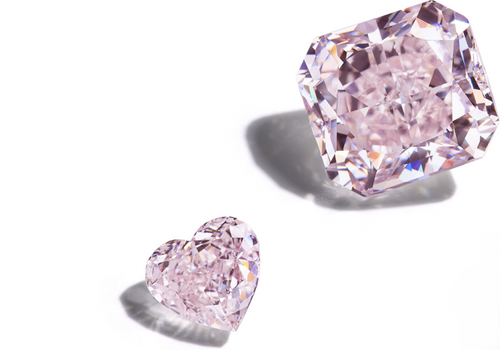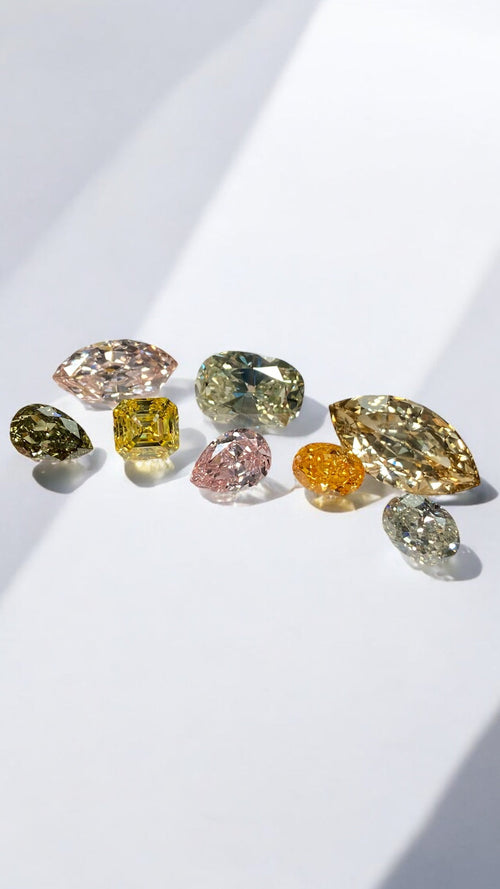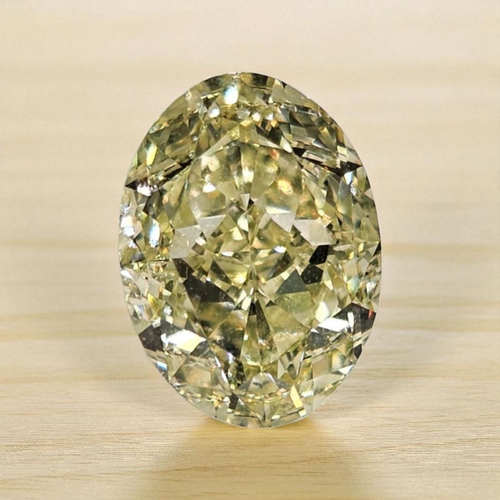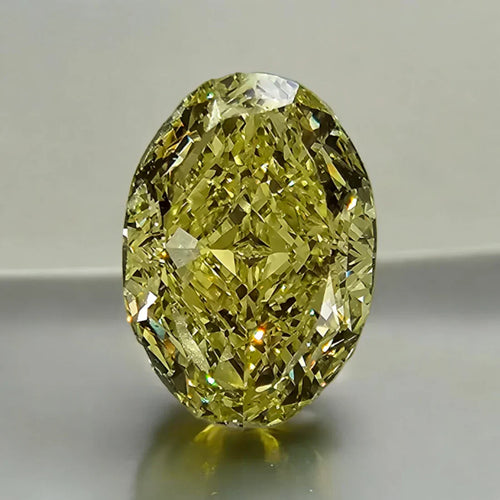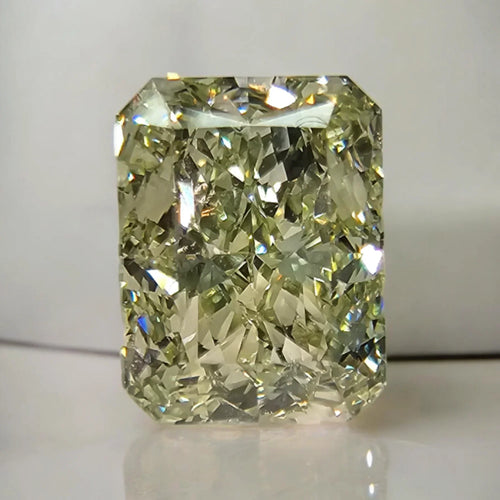Let's Design your Custom Ring. Call us at (212) 522 9918
In the world of fancy color diamonds, fluorescence has proven to be an asset for colored diamonds a staggering eight times out of ten. This thought may seem astonishing, considering that in the world of natural white diamonds, fluorescence can spell doom for the diamonds beauty and value. To unravel the mysteries behind diamond fluorescence, let's take a deep dive into the reasons why fluorescence can be beneficial for natural color diamonds.
What is fluorescence in diamonds?
To set the stage, in the case of natural white diamonds, the presence of fluorescence can cast a cloudy, milky veil over the diamond, particularly when the diamond hits sunlight. When sunlight interacts with fluorescence, it interferes with the passage of light rays through the diamond, diminishing its transparency. The Gemological Institute of America (GIA) classifies fluorescence into five levels: none, faint, medium, strong, and very strong. Notably, the term "medium blue" fluorescence frequently graces the grading reports of both white and select fancy color diamonds. This designation owes itself to the diamond's propensity to emit a captivating blue glow when exposed to ultraviolet (UV) light.

Photo Credit: GIA, Chip Clark at Smithsonian Institute
Fluorescence in natural color diamonds.
Fluorescence is a phenomenon influenced by distinct atomic structure variations, and its occurrence varies significantly between colorless and natural color diamonds. Approximately 30% of colorless diamonds exhibit fluorescence, whereas the range for natural color diamonds is broader, spanning from 60% to 100%, contingent upon the diamond's color and origin. For instance, a notable majority of blue diamonds, exceeding 90%, typically display no discernible fluorescence, whereas pink diamonds tend to exhibit fluorescence more prominently than other varieties. What adds an element of excitement to the world of fancy color diamonds is the kaleidoscope of fluorescence colors it can exhibit, including enchanting shades of green, white, yellow, orange, and even red!

Photo Credit: The Gemological Institute of America (GIA)
The misconceptions of fluoresce in color diamonds!
Here we are going to provide the truth to fluorescence: Fluorescence is NOT ALWAYS BAD! In fact in many cases it can make your color diamond have a higher intensity of color!
Even the GIA says that incases when strong fluorescent is present it does not damage the diamonds appearance. In many cases especially with yellow diamonds the GIA will grade the diamond fancy yellow with medium fluoresce and that diamond will stand out in stronger color and beauty against any other fancy yellow in our collection. Many clients who walk into our showroom with often choose the fancy yellow or fancy light yellow diamond with fluorescence present because it gives them a higher intensity yellow color for less. The Majority of people can not tell the difference between a diamond with or without fluorescence and has no effect on the diamond at all. It’s important to note - even when fluorescence is present the diamond we provide you will never look milky in any lighting.
Fluorescence in green diamonds.
Natural green diamonds get their mesmerizing color from radiation that displaces the atoms from there normal alignment giving them the green color! Now what is even more desirable in some cases is when a green diamond has strong fluoresce. Unlike yellow diamonds green diamonds more often times have strong green, yellow, orange fluorescence on the GIA Report instead of only having blue fluorescence.
In many cases we are asked to source green diamonds with strong fluorescence for their "neon green" look which is very desirable to many collectors because of the allure of the glowing look. Green diamonds that have this constant glowing look always have strong fluoresces and more often than not have strong yellow present. Shown below!

Fluorescence in pink diamonds.
Natural pink diamond get their desirable sweet color from intense heat and pressure causing distortion in the diamonds crystal lattice and not from trace elements like all other color diamonds. According to the GIA, in a study including 90,000 pink diamonds over the course of many years, 80% of all pink diamonds exhibit some degree of fluorescence. This does not have a largely negative impact on the value of the pink diamond as long as the diamond is still visually stunning. The most common fluorescence found with pink diamonds are blue, and orange. In investors eyes and our buyers stray away from orange in the diamond because it is far less desirable to any buyer looking for a pink diamond. Generally, most buyers want pure pink or purplish pink.
Should you buy diamonds with or without fluorescence?
Ultimately, the question you should be asking yourself when deciding between diamonds is; Is this diamond full of brillance, luster, and sparkle? Is this diamond sweet in color? Does this diamond show value to me? Those will lead you to your decision and are most important when purchasing. As long as the diamond has visible beauty and the fluorescence aren't noticeable or if your a neon green diamond lover (noticeable so you love the vibrancy).
Even the GIA quotes "Jewelry professionals disagree about whether fluorescence adds or detracts from the value of the diamond...Diamond fluorescence and its effect on value is not a simple question, and there isn't a simple answer. We recommend that you compare diamonds in a variety of lighting environments and choose the stone that you like the best."
Diamonds are all about your personal taste and the style you want to display with your jewelry so what is most important is that you love the diamond you choose!


